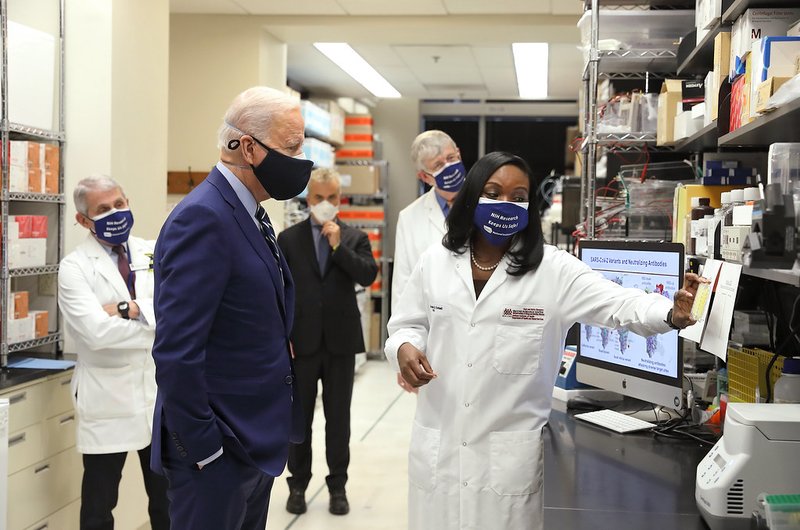The upcoming World Vaccine Congress in Washington D.C. (April 21-24, 2025) represents a critical inflection point for the vaccine industry. As someone who has spent decades studying the intersection of immunology and public policy, I can attest that beneath the corporate presentations and glossy marketing materials lies a complex landscape of genuine innovation mixed with concerning industry practices. What follows is my analysis of the key technological developments we can expect to see highlighted at this gathering, with a clear-eyed assessment of their potential impacts.
Congress – The Evolution of Vaccine Technology: A Mixed Blessing
The congress agenda reveals several technological streams that deserve particular attention. The focus on mRNA platforms, showcased in multiple sessions across the four-day event, indicates the industry’s continued investment in a technology that has fundamentally altered our approach to vaccine development. While the speed advantages are undeniable, questions about long-term effects and the rush to market remain insufficiently addressed in many forums.
The biodefense workshop scheduled for April 21st is particularly telling. Sessions like “Rapid vaccine development through manufacturing innovation” and panels discussing the “100-day mission” reveal an industry and governmental apparatus increasingly focused on speed rather than methodical safety protocols. As a researcher who values thorough scientific processes, I find this emphasis concerning, though I acknowledge the genuine need for prompt responses to emerging threats.
What’s refreshingly honest about this agenda is the acknowledgment of “remaining bottlenecks” in rapid vaccine development. At least some voices in the industry recognize that accelerated timelines must be balanced against rigorous safety standards.
Congress – Alternative Approaches Gaining Traction
One of the more promising developments evident in the congress schedule is the increasing attention paid to alternative vaccine targets and delivery systems. The “Alternative Vaccine Targets AM” session on April 22nd suggests a growing recognition that conventional approaches may have limitations that newer strategies can overcome.

Particularly interesting is the focus on combination vaccines and novel delivery mechanisms. These approaches potentially offer more comprehensive protection while reducing the number of separate vaccinations required – addressing one of the practical challenges in global immunization programs. However, we must remain vigilant about potential interactions between combined components and carefully assess whether these formulations truly outperform their separate counterparts.
The workshop on antimicrobial resistance (AMR) indicates another crucial direction for vaccine technology. As antibiotics become increasingly ineffective against evolving pathogens, preventative approaches through vaccination represent one of our most promising strategies. The presence of representatives from organizations like CARB-X and the Gates Foundation suggests serious investment in this area.
Global Health Considerations vs. Corporate Interests
The congress agenda reveals a tension between genuine global health concerns and commercial imperatives. Sessions focused on “Vaccine Access” and “Global Health NTDs” (Neglected Tropical Diseases) indicate at least some commitment to addressing worldwide health disparities. The inclusion of representatives from organizations like PAHO (Pan American Health Organization) and the World Bank in panel discussions suggests attempts to broaden the conversation beyond profit-driven motives.
However, it’s worth noting the heavy presence of major pharmaceutical companies throughout the agenda. While their expertise is valuable, their financial incentives don’t always align with optimal public health outcomes. The sessions on “Partnerships” likely reflect the industry’s continued preference for risk-sharing models that protect corporate interests while accessing public research funding.
The international representation at the congress, including dedicated sessions for Korean vaccines and discussions of international vaccine bio-clusters, indicates the increasingly global nature of vaccine development. This diversification potentially reduces domination by Western pharmaceutical giants and may lead to more affordable solutions for underserved regions.
The Technology Landscape: Genuine Advances Worth Watching
Several specific technological approaches mentioned in the congress agenda merit particular attention:
-
Conjugate Technologies: The presence of researchers focused on conjugate vaccines suggests continued refinement of a technology that has proven effective against encapsulated bacteria. The participation of companies like Vaxcyte indicates ongoing innovation in this space.
-
Plant-Based Production: Though not prominently featured, plant-based vaccine production represents a potentially transformative approach to manufacturing that could dramatically reduce costs and increase production capacity. The industry has been slow to embrace this technology despite its promise.
-
Mucosal Immunity: The focus on respiratory diseases suggests greater attention to mucosal immunity – a crucial but often overlooked aspect of vaccine development. Vaccines that effectively induce mucosal immune responses could provide more comprehensive protection against pathogens that enter through respiratory or intestinal routes.
-
Thermostable Formulations: Supply and logistics sessions likely address the persistent challenge of cold chain requirements. Advances in thermostable vaccine formulations could revolutionize distribution in resource-limited settings.
Critical Assessment: What’s Missing from the Conversation
Despite the comprehensive agenda, several critical areas appear underrepresented:
-
Independent Safety Monitoring: While “Vaccine Safety” appears as a topic, the agenda lacks substantial focus on independent monitoring systems free from industry influence. Given the acceleration of development timelines, robust independent oversight becomes increasingly essential.
-
Transparent Trial Design: The sessions on clinical trials would benefit from explicit focus on transparent trial design, including pre-registration of endpoints and full data disclosure. These practices are fundamental to maintaining scientific integrity.
-
Addressing Vaccine Hesitancy: The congress appears to have minimal focus on addressing legitimate concerns that drive vaccine hesitancy. Without meaningful engagement with public concerns, technological advances may fail to achieve their potential impact.

- Economic Models: While partnerships and access are discussed, there’s limited attention to innovative economic models that could decouple profit incentives from vaccine development. Alternative approaches like advanced market commitments and prize models deserve greater consideration.
Looking Forward: The Most Promising Directions
Based on my analysis of the congress agenda and broader trends in the field, several directions appear particularly promising for the future of vaccine technology:
-
Platform Technologies with Adaptability: The continued development of platform technologies that can be rapidly adapted to new threats represents a genuine advance. However, this approach requires careful balance between speed and thorough safety evaluation.
-
Precision Vaccinology: Personalized approaches based on immune profiling, while still nascent, offer the potential to optimize vaccine responses for different demographic groups or individuals with particular health conditions.
-
Combined Preventative Strategies: The integration of vaccines with other preventative approaches, including passive immunization with monoclonal antibodies, represents a more comprehensive strategy for addressing complex health threats.
-
Open Science Models: Though not explicitly highlighted in the agenda, open science approaches to vaccine development have demonstrated considerable value during recent health emergencies. Expanding these collaborative models could accelerate innovation while improving transparency.
A Final Word on Balanced Progress
The 2025 World Vaccine Congress represents both the promise and challenges of modern vaccine development. The technological advances on display offer genuine hope for addressing persistent and emerging health threats. However, we must remain vigilant about balancing innovation with safety, corporate interests with public health needs, and speed with scientific rigor.
As we evaluate these developments, it’s essential to maintain a critical perspective that acknowledges both the remarkable achievements of vaccine science and the systemic challenges that sometimes impede optimal outcomes. The most promising path forward combines technological innovation with strengthened oversight, transparent processes, and genuine commitment to global health equity.
For those attending or following developments from the congress, I encourage a discerning approach that separates genuine advances from marketing hyperbole, and that constantly questions whether our technological capabilities are being directed toward the most pressing health needs rather than the most profitable markets.



